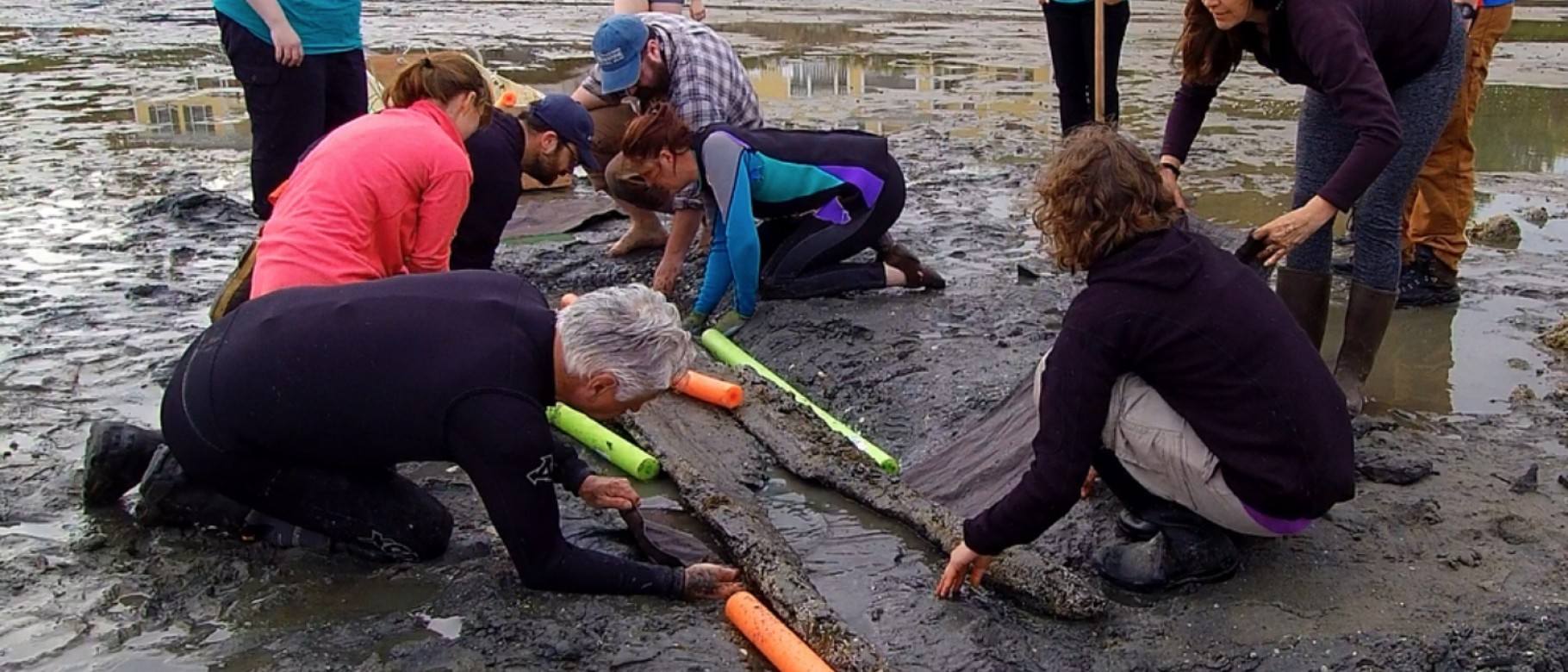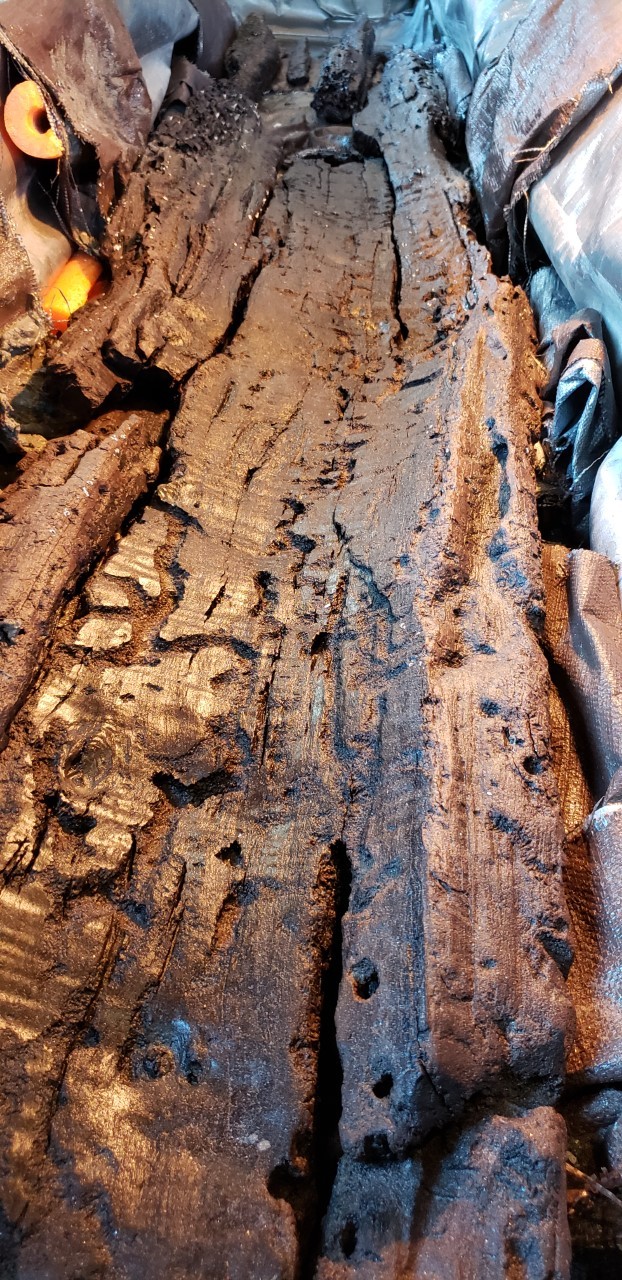Students help unearth the oldest canoe of its kind in Maine

Students from the University of New England and the University of New Brunswick (UNB), along with the Cape Porpoise Archaeological Alliance (CPAA), a joint effort between the Brick Store Museum in Kennebunk and the Kennebunkport Conservation Trust, have unearthed and recovered the oldest dugout canoe ever found in Maine. It is believed those who used the canoe may have been from the Algonquin tribe.
During the winter months, shifting sands exposed a wooden artifact in the intertidal zone off Cape Porpoise. CPAA’s Tim Spahr suspected it to be a dugout canoe.
UNE students in a summer course, called Archaeological Field Methods in New England Prehistory, participated in the excavations with UNB students who stayed on UNE’s Biddeford Campus.
The course is taught by Arthur Anderson, Ph.D., visiting assistant lecturer in the Department of Society, Culture, and Languages.
“As the artifact became more exposed, we became convinced that it might be an essentially unique example of a prehistoric dugout canoe in a maritime environment,” Anderson stated.
The students and workers pulled the Native American vessel from the mud this past summer. It is estimated to be about 700 years old.
“As the artifact was rapidly deteriorating, we decided to excavate it,” explained Anderson. “The UNE/UNB team of students had a great day and carefully removed the remains from the mud without damaging it.”
The artifact has since been cleaned, desalinized, and is now undergoing conservation work by the CPAA team.
An analysis shows it to be a dugout canoe of yellow birch with clear evidence of having been shaped by fire and stone tools.
Anderson and his team presented their first academic paper on the canoe at the Eastern States Archaeological Federation Conference in Langhorne, PA. They are now preparing an initial publication.
“We have an unprecedented opportunity to study prehistoric transportation technology and maritime adaptations here in southern Maine through this artifact,” Anderson commented. “We look forward to collaborating with other scholars and indigenous communities to understand it further.”
Read about it in the Bangor Daily News, Seacoast Online, and on WGME, MSN, FOX News and the CBC
